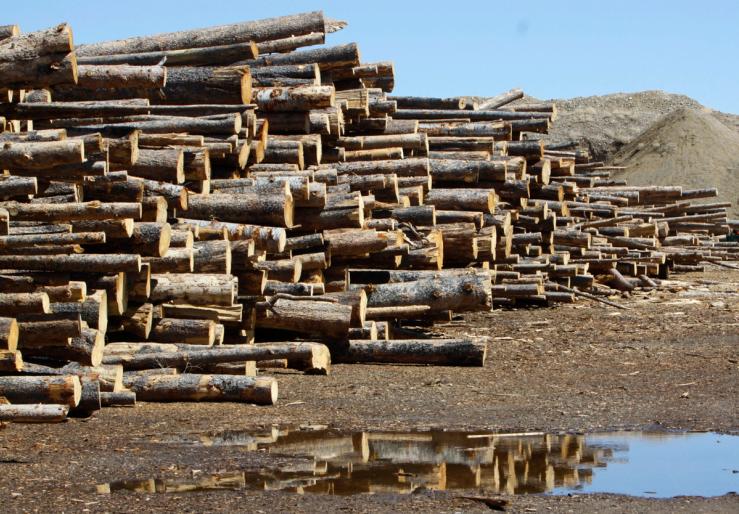The News
UK regulators last week opened an investigation into Drax, questioning whether the British energy firm made misleading statements about where it sourced the wood for its biomass-fueled power stations. It’s not the only controversy facing a sector that has struggled to prove its bona fides, in both the climate and the financial sense.
In February, South Korea — the world’s third-largest importer of wood pellets for use in energy — announced it would no longer allow most woody biomass to be eligible for green subsidies due to deforestation and cost concerns. Pressure is also ramping up in Japan and the US, home to the biggest producer of wood pellets, Enviva.
“A lot of the industry stakeholders assumed perpetual government support,” Hansae Song, who leads the forests and lands team at the South Korean think tank Solutions for our Climate told Semafor, “but this move by South Korea shows that without support, there won’t be any more biomass.”
In this article:
Know More
Until recently, renewables weren’t seen as stable or reliable enough to replace large-scale but heavily polluting coal-fired power plants. In the US, liquefied natural gas was the most common option. Elsewhere, woody biomass grew rapidly, partly because it was eligible for green or renewable energy credits.
Biomass can refer to several things, including agriculture or wood waste, but one fuel source in particular, wood pellets, has risen to the fore as a cost-effective and sustainable alternative to coal in thermal power plants. Coming from trees, this form of biomass was, proponents argued, carbon-neutral, because any CO2 emitted during burning would be captured by newly planted trees. Unlike renewables like wind and solar, biomass was reliable, and it could be burnt in existing coal-fired power plants after minimal modification.
The last two decades have seen a significant increase in woody biomass power generation. The world’s largest biomass power plant is the 2,676 megawatt (MW) Drax Power Station in northern England. South Korea is home to dozens of power stations, including the 210 MW Dangjin Bio and the 375 MW Yongdong. Other major woody biomass burners include Japan, which opened the new 49.9 MW Karatsu Biomass Power Plant in September.
“With the increasing focus and importance on energy prices in the US and abroad, we are seeing increased demand and see great potential in other markets to use our sustainable woody biomass pellets,” an Enviva spokesperson wrote in an email to Semafor. “Woody biomass is an excellent complement to more intermittent power generation sources while still being carbon neutral on a lifecycle basis.”
Nithin’s view
Despite Enviva’s upbeat projections, it’s getting increasingly hard to argue that woody biomass is either sustainable, or even desirable, from a climate or an economic perspective.
Researchers for groups including the National Resources Defense Council have questioned the industry’s core “carbon-neutral” message, while other organizations allege that wood pellet production has driven deforestation, biodiversity loss, and peatland degradation in the southern American, tropical Southeast Asian, and temperate Canadian forests. Some analysis has found that, once all emissions were factored in, woody biomass could even be worse for the climate than coal.
But the bigger challenge may be economic. So far, the industry has not been able to make woody biomass profitable without relying on subsidies, as was the case in South Korea. In Japan, biomass benefits from being eligible for the national feed-in-tariff for renewable energies, and in the UK, authorities have halved subsidies for Drax — the company currently gets nearly £1 billion a year — and will only use the plant as a back-up to cheaper sources of renewable power. Drax declined to respond to a request for comment.
The supply chain is also facing challenges. Enviva, a key source of British, Korean, and Japanese wood pellets, declared bankruptcy in 2024, from which it emerged later that year, but to some, the viability of its recovery remains uncertain, especially after South Korea’s move. Under the new UK deal for Drax, 100% of the wood pellets it burns must be “sustainably sourced,” an issue at the core of British regulators’ recently opened investigation. Draxsaid it was cooperating with regulators.
Other markets offer seemingly limited prospects for growth. The biomass industry had in prior years pinned hope on expanding to markets like Australia, China, and the European Union. But Australia has rejected biomass entirely, and while some European countries like the Netherlands and Italy have expanded woody biomass, the EU has limited the sector’s role in the bloc’s Renewable Energy Directive.
Japan, the other major consumer alongside the UK and Korea, also faces an uncertain future. Japan NRG, an energy think tank, noted in a recent update that there are unlikely to be any more biomass plants opening between now and 2030, as the government’s goal for the technology has been met. By then, solar, energy storage, and a massive planned expansion of offshore wind could make additional biomass unnecessary.
Room for Disagreement
Rising energy demand, driven by breakneck construction of data centers and growing electrification of transport, could provide a lifeline to biomass, as countries seek to maintain baseload power generation on the grid. Enviva also sees heavy industry as a future market. “We see great potential for sustainable biocarbon feedstock in the form of pellets to help defossilize hard-to-abate sectors like cement, steel, lime, chemicals, and transportation fuels like sustainable aviation fuel,” the Enviva spokesperson said.
And the threats to the sector may also be overstated: Details of the South Korean phaseout of biomass subsidies have not yet been released, despite being announced in February. One reason may be the chaotic year that has taken place in Korean politics, with an attempted military coup, impeachment, and a new president being elected and taking office in June. The new leader has pledged stronger climate and biodiversity goals than his predecessor, but has yet to flesh out his policies.
Notable
Sustainable aviation fuels (SAF) offer some hope for biomass, according to a recent report from North Carolina State University in the US.


